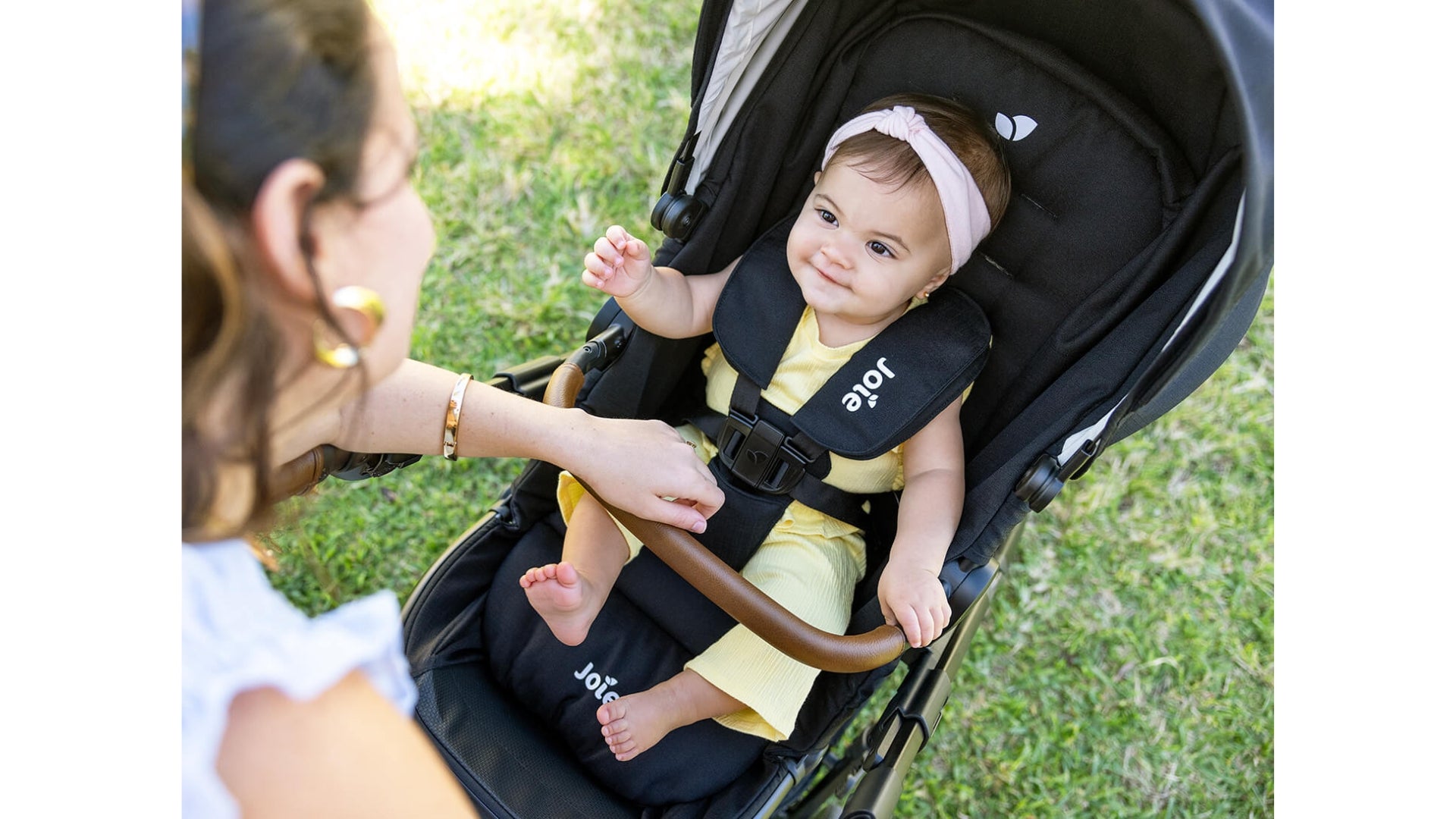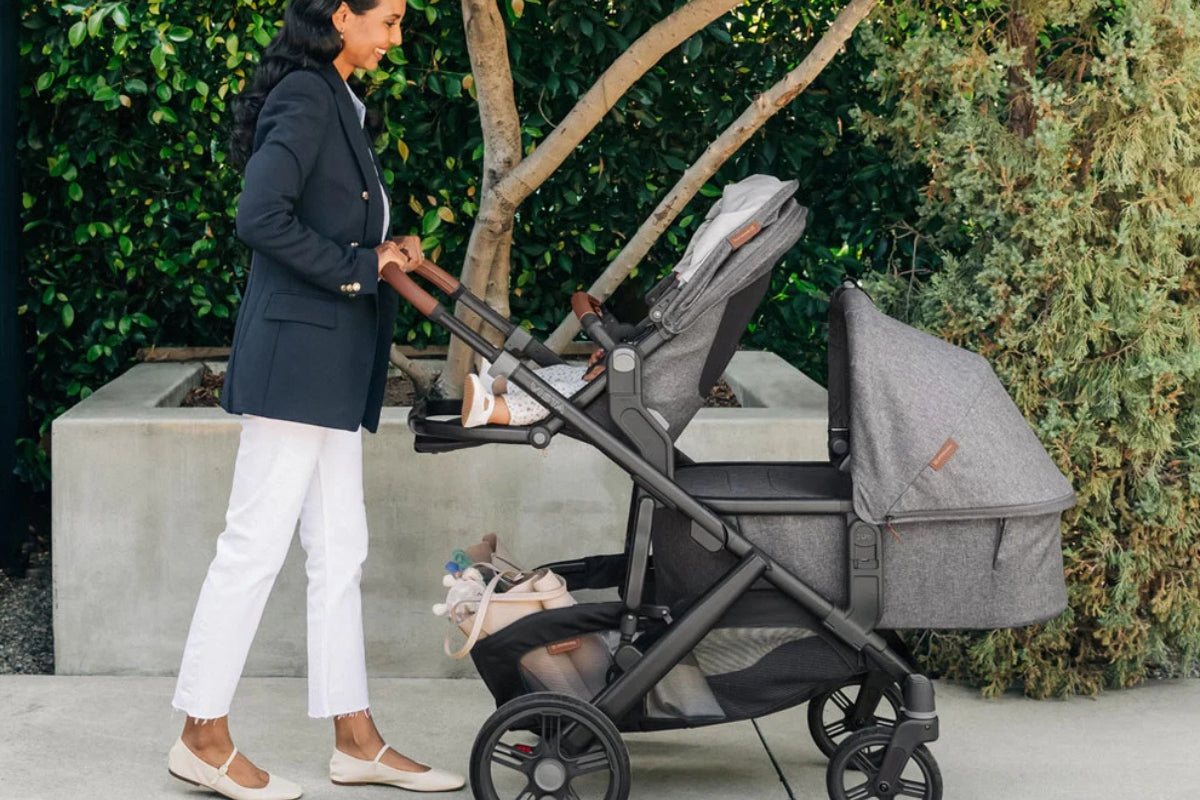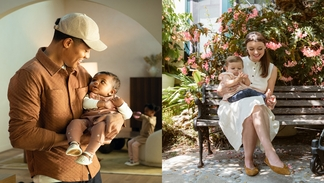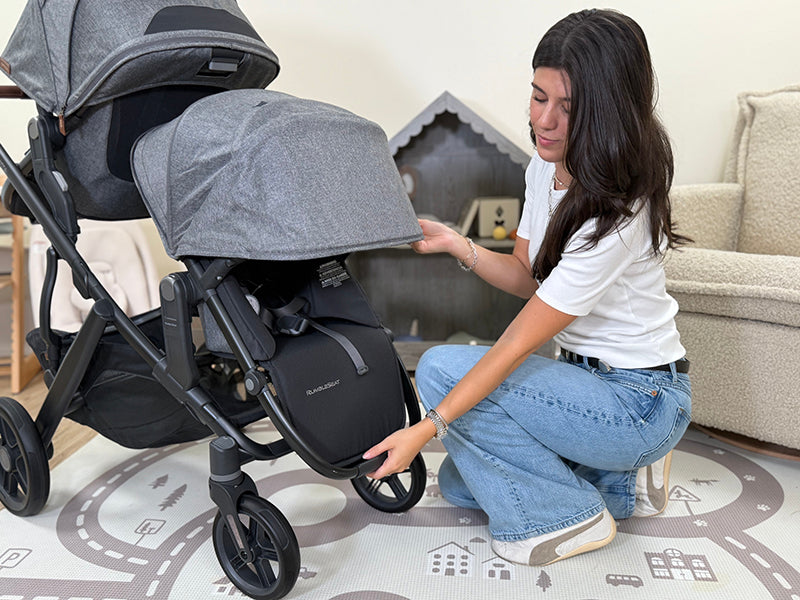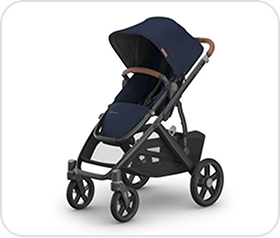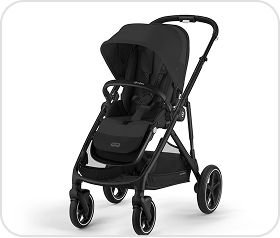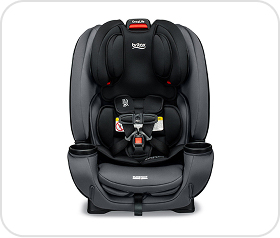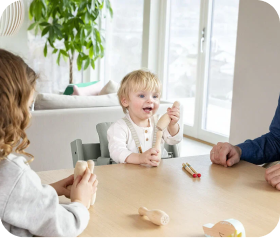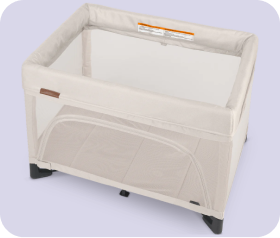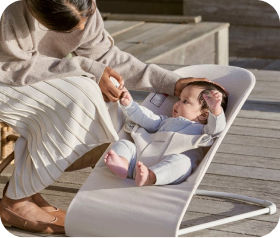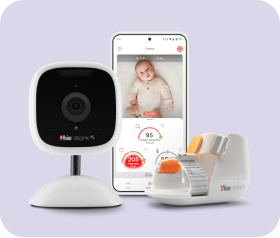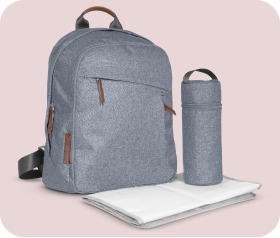
Strolleria's Ultimate Car Seat Shopping Guide!
What’s the best car seat for your baby, car, and family? It all depends on how big your child is, what features you are looking for, and what car it will be installed in. Not all car seats will be suitable for all children, families, or cars.
Ensuring the safety of your child during car rides is a universal concern, and it's important to note that all car seats undergo rigorous testing to meet stringent safety standards. Whether you choose an infant car seat, convertible seat, all-in-one, or booster, each type is meticulously engineered to provide optimal protection in the event of a collision. Manufacturers adhere to strict guidelines, conducting thorough crash tests and simulations to guarantee that their car seats meet or exceed established safety requirements. Federal crash test results are not released to the public, we just know that the car seat passed the tests.
To make sure your child is as safe as possible, it’s imperative to select a car seat that is appropriate for your child's age, weight, and height, and ensure that it is correctly installed and used according to the manufacturer's instructions.
We’re here to help you choose the right car seat for your child. In this car seat buying guide from Strolleria, you’ll learn:
- Car seat buying basics and factors to consider in your purchase
- Characteristics of infant, convertible, and boosters —and the benefits and drawbacks of each type
How to choose a car seat
You’ll need a car seat to bring your newborn home from the hospital, to take your toddler to preschool, to drop your kindergartener off at school, to drop your 8 year old off at a friends - you’ll be using a car seat from birth to about age 10! You will likely go thru a few car seats per child, and most likely you’ll want car seats that are easy to install, easy to make adjustments, and comfortable for your child.
Most children use three car seats in their lifetime - infant car seat to convertible car seat to booster. However, there are other categories offered, and hundreds of models to choose from. How do you start narrowing down the field? Let's look at the different types of car seats!
Infant Car Seats
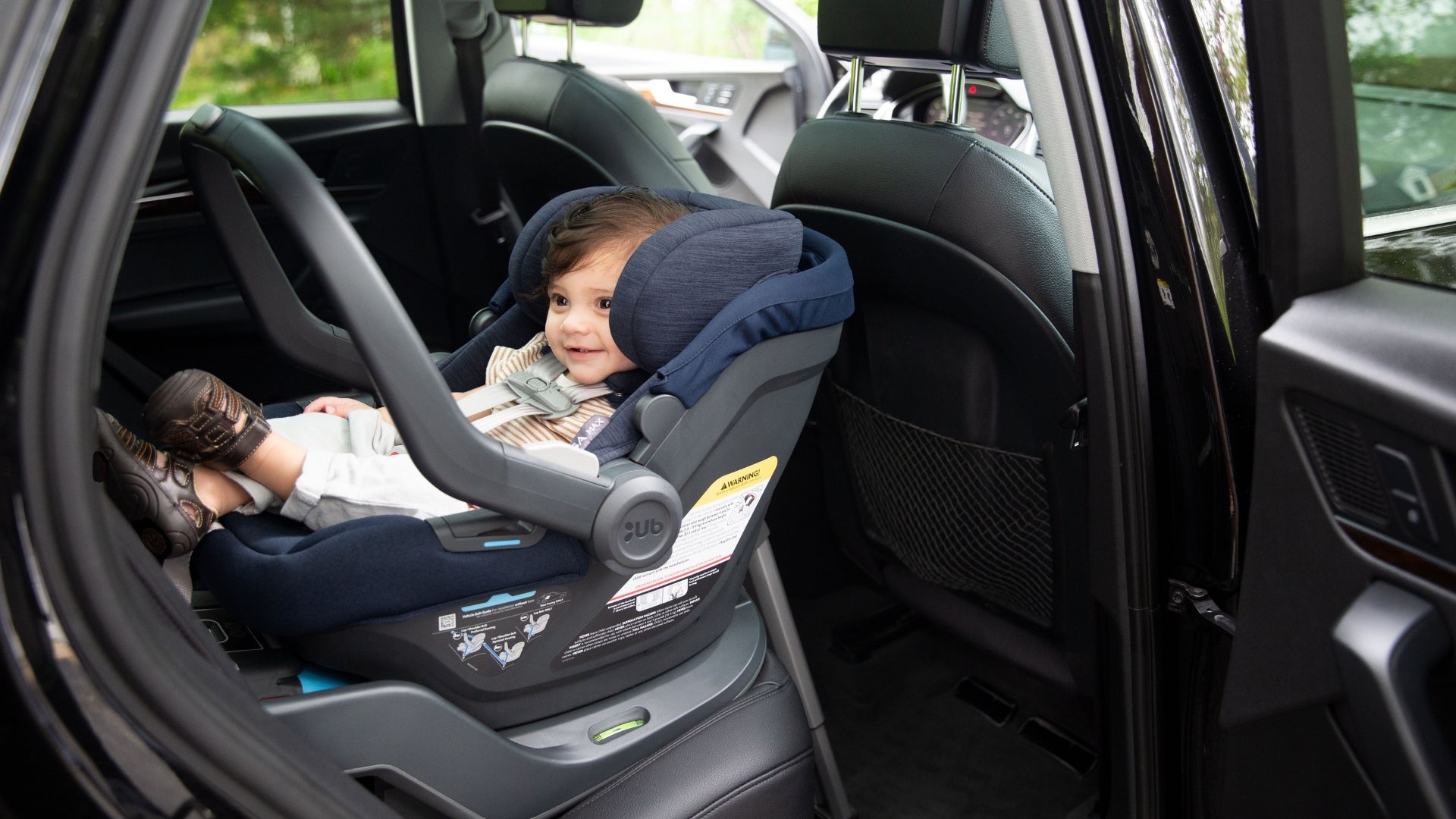
Infant car seats are the most popular choice for parents with newborns. They are portable, lighterweight, and can attach to strollers. Infant car seats are typically outgrown around a year old - but that will depend on your baby and your specific car seat. Make sure to refer to the manual so you’re aware of the maximum height, weight, and torso height limits. Once one limit is met, the seat is outgrown.
Infant car seats typically come with a base for your vehicle. The base stays installed in the car, and you can remove the car seat at your destination to click it into a compatible stroller. Super convenient and easy, especially when your baby is taking a snooze!
Most infant car seats can also be installed without the base for travel or whenever needed.
Once your baby reaches one of the car seat limits, it’s time for the next car seat - the convertible car seat.
Pro: Convenient and portable plus compatible with strollers. Con: Only last about a year before your baby outgrows it.
Convertible Car Seats

Convertible car seats are typically used once your baby outgrows their infant car seat up until they are ready for a booster seat - so from about 1 year old to 5 or 6 years old. Some convertible car seats can be used from birth, however, you will not have the portability and convenience that the infant seat offers.
Convertible car seats start out rear-facing and transition to forward-facing when your child is bigger. Each state has their own rear-facing laws, but best practice is to max out the rear-facing limits of your seat (typically 40-50 pounds). Most children can rear-face until 3-4 years old. The longer you can rear-face, the safer.
While using your convertible car seat it’s imperative to keep a close eye on your child’s growth and the car seat manual so you know what adjustments need to made. They will be in the convertible car seat the longest period of time so getting familiar with the car seat is a must.
Rotating Convertible Car Seats

Rotating convertible car seats have become extremely popular. These seats rotate towards the door to making loading and unloading heavy and squirmy toddlers a breeze!
Rotating convertible car seats function the same as regular convertible seats in the fact that they start out rear-facing and can later be rotated forward when the time comes.
Remember to check out the height (as well as torso height) and weight limits and familiarize yourself with the car seat. The popular Nuna REVV for example has a shorter lifespan because the limits are on the lower end - the seat is outgrown once the child reaches 40 pounds or 43 inches tall. You will need another harnessed seat prior to moving onto a booster since most children are around 4 years old when they’ve outgrown the REVV.
Pro: Saves your back - easy loading and unloading! Con: Some of them have lower limits, and most take up more room in your car.
Booster Car Seats

Next up, booster seats! Your child has finally outgrown the harnessed car seat and is ready to buckle up with the seatbelt. But, they’re not quite ready to sit in the actual car seat - they need a little boost to make sure the seatbelt fits them safely and correctly.
To ride in a booster, your child must be at least 40 pounds and four years-old, but booster readiness is more about maturity then anything else. In our experience, no four year-old is ready for a booster. Once your child moves into a booster, they must be able to sit properly the entire ride - no slouching, bending over, playing with the seatbelt, goofing off, etc. - their safety is in their hands now.
Booster seats can be high back or just the bottom portion - no back. Many high back boosters can transform to no back when your child is ready.
High back booster seats provide more support for your younger child, help with shoulder belt positioning, and are most of the times more comfortable. It’s a good idea to start your child in a high back booster seat.
Combination Car Seats

A combination car seat is a type of forward-facing-only car seat that is first used with a 5-point harness and top tether and then converts later to a booster seat. These seats are great for a child that has outgrown their convertible car seat (or their car seat is getting passed down to a younger sibling), and still needs to be harnessed.
Pro: You can harness your child longer and don’t have to pay for a feature you won’t use (rear-facing). Con: Once your child is in a booster seat, the seat is pretty bulky and most of the time the back cannot come off to transition into a low back booster.
All-in-one Car Seats

All-in-one car seats are car seats that do it all! They are approved for newborns and grow with your child, ultimately turning into a booster years down the road. These seats are great for those not wanting to update car seats or grandparent and caregivers.
Pro: Not having to update your car seat ever. Con: You lose the convenience of an infant car seat, and once your child is in the booster seat it can be quite large and bulky. Also, it means having the same seat for many, many years which could mean many years of snack and dirt build up!
Which car seat is right for me?
Urban dwellers who get around on public transportation probably wouldn't buy the same car seat as parents cruising the suburbs in an SUV. Just as a parent to newborn likely wouldn’t buy the same car seat as a school aged child.
Ask yourself these questions when choosing a car seat:
How big is my child?
Car seats have specific height and weight requirements and limitations. Make sure you know what type of car seat is appropriate for your child.
As a general rule:
0-1 years old = Infant Car Seat
0-6+ years old = All-in-one Car Seat
1-5 years old = Convertible Car Seat
3+ years old = Combination Car Seat (harness to booster)
6+ years old = Booster Car Seat
Do you plan to have more children?
Car seats can be passed down to future children. It can be a puzzle to figure out, but you can save money by passing down the appropriate seat to a sibling. For example, if your oldest child is in a forward facing convertible car seat when it’s time for your younger child to transition out of the infant car seat you could give them your oldest child’s seat. Then you would purchase a combination seat for your oldest so they could stay harnessed longer. You would save money by not having to purchase a second convertible car seat.
What car will you be using?
Not all car seats are compatible with all cars. It’s important to select a car seat that fits safely and securely in your specific car. It’s a good idea to consult a Car Seat Passenger Safety Technician (Strolleria has CPSTs on staff!) to make sure the car seat is a good choice for your car.
Also, will you be needing to put two or three car seats side by side? This is important to know prior to selecting an appropriate car seat as not many are suited for three across.
What stroller are you planning to use?
Infant car seats click onto strollers to make a convenient travel system. Whether you choose your infant car seat first or stroller first, it’s important to figure out the compatibility. Not all car seats work with all strollers. Some strollers like Nuna only work with Nuna car seats. Other strollers have a wide variety of car seats that work with them (once the appropriate adapter is purchased).
Car Seat Prices
Depending on its quality, features, and type, the price of a car seat varies widely: from less than $200 to more than $700. Important to note is more expensive does not equal more safe. All approved car seats are safe if used properly. However, many of the more expensive car seats do have advanced safety features not seen in lower priced models.
What else makes a high-quality car seat worth the price?
- Quality endures throughout use for multiple children
- Comfort
- Ease of cleaning
- Ease of install
- Advanced safety features such as rigid latch, load leg, anti-rebound bar or panel
- Steel frame
- Convenience features such as cup holders, buckle holders, no rethread harness, etc.
Car Seat Types in More Detail
In this section, we'll explain the uses, benefits and drawbacks for the different types of car seats!
- Infant Car Seats
- Infant Car Seat / Stroller in One
- Convertible Car Seats
- Rotating Car Seats
- All-in-One Car Seats
- Combination Car Seats
- Boosters

Infant Car Seats
The infant car seat is how most babies begin their car seat journey. Infant car seats are compatible with strollers and offer portability and convenience.
Best for
- Families who want to click in a car seat to a stroller
- Families with multiple care givers
- City dwellers
- Families that travel
Age range
- Birth to about one year-old - will depend on your baby and your specific seat when the limits are met
Benefits
- Portable
- Click into strollers
- Convenient - don’t have to wake the baby for quick errands
- Easy to install
- Great for cold or hot weather - can load the baby in the car seat in the comfort of your home versus out in the elements
- Can purchase multiple bases for other vehicles
- Can install most without the base for travel or ride sharing
- Easy for travel
Drawbacks
- Short lived and expensive for length of time used
Popular examples
Infant Car Seat and Stroller in One
There are a couple infant car seats on the market that turn into strollers. This can be a game changer for busy families on the go!
Best for
- Families who travel often or make frequent trips throughout the day
- Families with multiple children who are in and out of their car often throughout the day
Age range
- Birth to about one year-old - will depend on your baby and your specific seat when the limits are met
Benefits
- Becomes a stroller
- Convenient - don’t have to wake the baby for quick errands
- Easy to install
- Great for cold or hot weather - can load the baby in the car seat in the comfort of your home versus out in the elements
- Can purchase multiple bases for other vehicles
- Can install without the base for travel or ride sharing
- Easy for travel
Drawbacks
- Less storage space than using a full-size stroller with an infant car seat clicked in
- Small wheels are less sturdy and maneuverable - not great for longer walks
- Likely need a full size stroller on top of the car seat/stroller combo
- Outgrown after a year old
Popular examples

Convertible Car Seats
Convertible car seats are the next step in car seats and are designed to start out rear-facing and transition to forward-facing down the road. They are heavier, larger, and harder to move from vehicle to vehicle. They are designed to stay installed in the car and do not work with strollers.
Best for
- Families with older babies and toddlers
Age range
- Depends on the car seat model - some are designed for newborns
- Most use between 6 months and 6 years old
Benefits
- Can be rear-facing and forward-facing
- Larger and more comfortable than infant car seats
- Grows with the child
- Lasts many years
Drawbacks
- Large and bulky
- Not easy to move from one car to the next so you will likely need more than one
Popular examples
Rotating Convertible Car Seats
Toddlers can be quite squirmy when trying to get them in the seat, and rotating convertible car seats help make life easier. Rotating convertible car seats are car seats that rotate towards the door for easy loading and unloading.
Best for
- Parents who may have a bad back
- Parents who want quicker and easier loading and unloading
Age range
- Depends on the car seat model - some are designed for newborns
- Most use between 6 months and 6 years old
Benefits
- Rotating makes loading and unloading a breeze
- Saves your back
- Can be rear-facing and forward-facing
Drawbacks
- May need more room in the car than a regular convertible seat
- Not easy to move from one car to the next so you will likely need more than one
Popular examples
All-in-One Car Seats
All-in-One Car Seats are exactly how they sound - they are a seat that grows with your child from birth to school age.
Best for
- Families that don't want to think about having to get another car seat
- Grandparents or caregivers that may drive children of different ages
Age range
- Birth to 8+
Benefits
- Can eliminate the need to purchase another car seat
- Can be used by children of different ages
- May save you money and time in the long run
Drawbacks
- The seat may become dirty after so many years of use
- As a booster, the seats are typically pretty bulky
- Some of them have overstated limits and won’t fit your child once they are in booster mode
Popular examples
Boosters
The last step of the car seat journey is a booster. Boosters are for kids older than 5 (and 40 pounds) and can be high-back or no back.
Best for
- Children who have outgrown their harness seat and are mature enough to sit properly the whole ride
Age range
- 5+ and 40 pounds+
Benefits
- Boosters position the belt properly to keep your child safe
- Typically lightweight and portable
Drawbacks
- Your child is now in charge of their safety and has more freedom - remind them of how to properly sit in the car
- Some boosters are tricky for kids to figure out how to buckle at first
Popular examples
Conclusion
Thanks for reading Strolleria's Ultimate Car Seat Buying Guide! We hope we've helped make the decision a little less confusing.
What's Strolleria, anyway? We're a retailer of strollers, car seats and baby gear from exclusively high-quality brands. Whether you're shopping at Strolleria online or in our showroom in Scottsdale, Arizona, we're here to help you find the baby gear that's right for your family unique needs. We also offer the lowest prices available, plus a loyalty rewards program and free shipping on orders over $49.
If you need help installing your new car seat and live in the area, book an appointment with one of our CPSTs for professional installation! At Strolleria, our mission is to make the gear-buying experience easier on parents. That includes you! Feel free to e-mail any of our baby gear specialists with questions at customercare@strolleria.com or chat with us today!
Shop our best selling car seats below!




